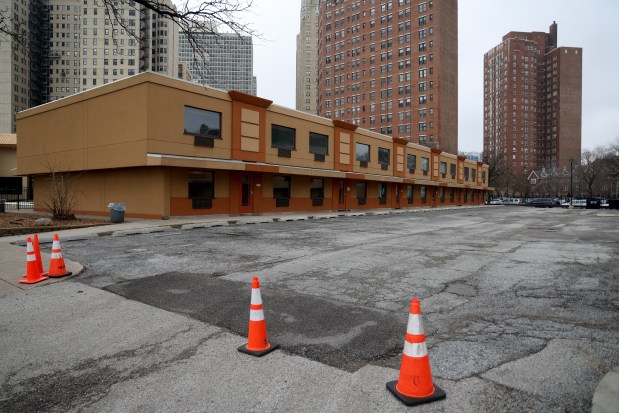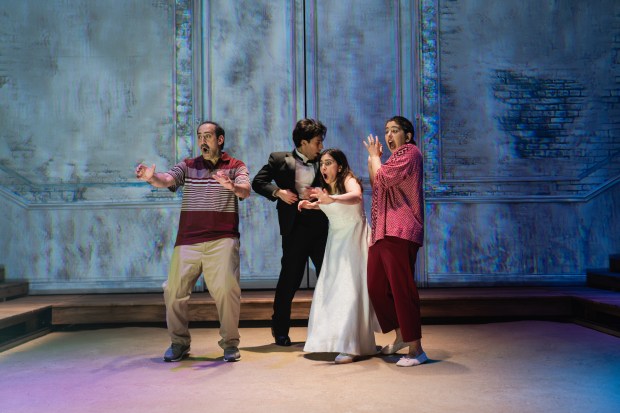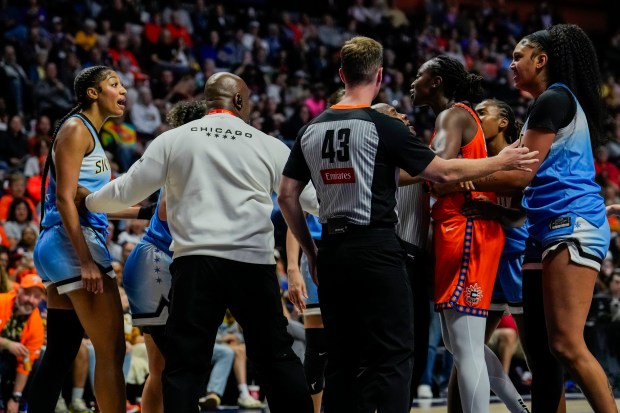When a converted Kenwood hotel opened its doors to migrants in the summer of 2023, officials who announced the news received vociferous pushback from residents.
They had numerous concerns about the shelter at 4900 S. DuSable Lake Shore Drive: whether migrants would be vaccinated and fingerprinted; how their children would be educated; the food they would eat. And many wanted to know what Chicago was doing for the large and growing homeless population that predated the migrants’ arrival.
Almost three years later, buses sent by Texas Gov. Greg Abbott have stopped arriving from the more closely surveilled southern border. The city has closed down most of the facilities it scrambled to stand up to meet waves of asylum-seekers, mostly from Venezuela. Thousands have transitioned to permanent housing. Police stations, once overflowing with newly arrived people, are empty.
What remains is a new, merged shelter network officials have dubbed the One System Initiative, which houses anyone, from anywhere, who doesn’t have a place to go. The city and state were running 28 migrant-exclusive facilities at the peak of arrivals in January of last year, according to city census data. They have collaborated with nonprofits to run 50 total sites across the system, city officials said.
Homeless advocates have long championed the idea of a combined system, saying it would spread out resources to a wider range of people. The first few months under the new system brought changes those advocates hailed as triumphs, including the opening of a new no-barrier emergency shelter on the Lower West Side that works as a gateway to the social service network for anyone.
Challenges remain. The number of people who need a short-term place to sleep still exceeds the 7,400 beds available in the merged systems. Some facilities are still dealing with bilingual staff shortages. Even if Chicago’s emergency shelters were perfectly equipped to meet demand, advocates say that issues with homelessness will persist unless the city addresses its inadequate supply of affordable housing. And in Kenwood, some residents are pushing back and may take legal action to try to prevent a shelter that once opened for migrants from becoming a permanent fixture in their area.
Inside the shelters, residents and workers say there is empathy among the people staying there.
“Some come because their house burned down, others because they just arrived in the U.S. and have nowhere else to go, some are fleeing violence from places like Mexico, Venezuela, or Haiti,” said Marcos Sanchez, a Venezuelan migrant who now works at a state-funded shelter near Midway Airport. “People support each other emotionally.”
Kenwood neighborhood divide
The first waves of arriving migrants set off a swirl of activity across the city in August 2022. As arrivals picked up, thousands of volunteers organized to help people get on their feet and the city and state hurried to find shelter for the asylum-seekers, who at one point were arriving by the hundreds.
Kenwood wasn’t the only neighborhood to see heated arguments about shelters: Woodlawn on the South Side, Galewood on the Northwest Side and Pilsen, a hub for Chicago’s Mexican-American community, also became centers of intense debate about whether and how migrants should stay there.
Joy Cobbs remembered that while many residents were unhappy about plans to put migrants in hotel buildings in the 4900 block of DuSable Lake Shore Drive — surrounded by high-rise condominiums and townhouses — she and others thought the neighborhood needed to do its part with what city leaders described as a rapid response to a national emergency.
“There was an understanding in the community that this was an emergency situation and it was going to be for a limited time,” she said. “We did pitch in with blanket drives and toy drives.”
Cobbs, 53, and some of her neighbors came to find the activities around the shelter “extremely disruptive.” They cited large gatherings in nearby parks, litter, outdoor cooking, crime, smoking and drug use among their concerns.
“People can try to make us feel a certain way, say we’re intolerant,” Cobbs said. “We gave literally close to two years of tolerance.”
Cobbs is one of a group of residents who have organized Hyde Park Neighbors Preserving Community, which is trying to prevent the shelter from continuing to operate past July, when the city will take it over from the state. The group, led by a seven-person organizing committee, has gotten about 1,200 signatures on a petition asking legislators to oppose the shelter.
State Rep. Curtis Tarver, who represents part of the south lakefront in the Illinois House, wrote a letter to the state and the city in late March, decrying the decision to keep the shelter open, its planned capacity of 750 people and the way the decision was communicated to residents.
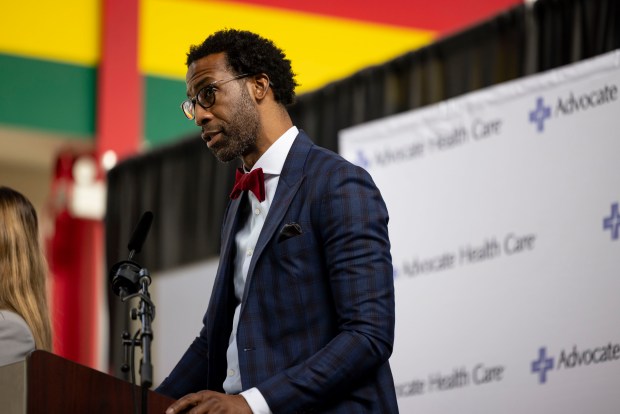
State Sen. Robert Peters agrees: “750 seems pretty large.” But the Chicago Democrat said he is compelled to support the shelter.
“Hyde Park is about embracing people,” he said. “It has always been about embracing people.”
Ginni Cook shares that conviction. Cook, 83, lives a few blocks from the site and said she’d heard her neighbors’ objections but felt that “we can’t keep saying, ‘not here, not here.’”
“We’ve got to do what we can,” she said. “What if that were me?”
She thought the facility should house fewer people for the sake of safety and privacy for those living there, and supported the idea of security measures for their protection.
Peters wrote to the city and state late last month asking that the shelter’s capacity be capped at 450 people, with a promise not to expand into adjacent buildings. He requested that security cameras be installed at the mouth of the parking lot, increased sanitation service and stepped-up communication between officials and the neighborhood about how the facility is operating.
By mid-April, 414 people were staying at the shelter, according to the city. Peters, who visited the facility April 15, said most of the people staying there are children. Officials have since acknowledged the letter and been “responsive” to his inquiries about operations and data, Peters said.
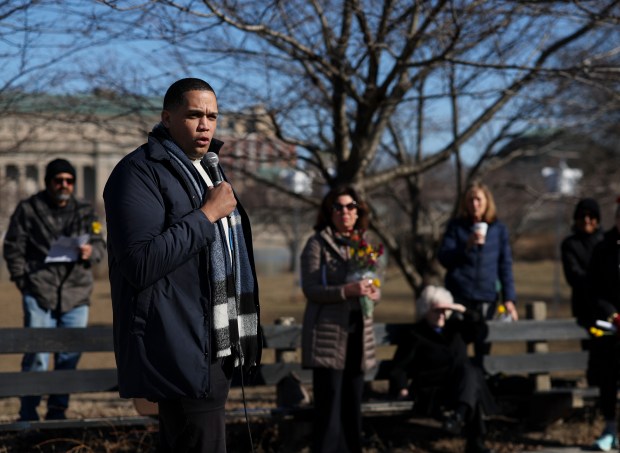
Reached for comment, city officials acknowledged that Ald. Desmon Yancy, 5th, reported a “lack of clarity” about long-term plans for the site and pointed to an update meeting held for residents in February.
Though the city said the meeting was meant to “reaffirm their commitment to supporting both shelter residents and the broader community,” members of Hyde Park Neighbors Preserving Community said the meeting felt like a lecture and were caught completely off guard by its outcome.
A flyer has begun to circulate in at least one of the neighborhood’s apartment buildings asking residents to help raise money for a legal challenge to the shelter.
“We must fight to maintain our property value, quality of life, and integrity of our neighborhood,” the flyer reads. “If we don’t, we will surely forget it.”
The flyer appears to seek about $7,500. An online fundraiser had raised just over $5,000 as of last week.
A learning curve
City officials hired several controversial out-of-state contractors — Favorite Healthcare Staffing and GardaWorld Federal Services — to respond to hundreds of migrants arriving in Chicago daily. But Andre Gordillo, whose nonprofit New Life Centers runs two of the shelters as part of its social service network on the South and West sides, said groups like Favorite have “packed their bags.”
These days, Gordillo, who leads New Life’s “New Vecinos” program, said the two state-funded shelters they help operate in Kenwood and in West Lawn are far less busy than when hundreds of people were arriving every day on buses. At the peak of the crisis, 189 migrants a day needed shelter in addition to the existing needs of Chicagoans, according to the city.
Now, everyone who stays in a shelter is enrolled in the city’s housing waitlist, known as the Coordinated Entry System, but officials no longer differentiate between individuals who have migrated and those who were born in the U.S. As of March, city officials said there were 128 combined — migrant and nonmigrant — requests for shelter a day.
About 75% of the people at the shelters New Life runs are migrants, Gordillo said; the rest are a wide range of nationalities from Haitians to Russians.
New Life is adjusting its support resources inside the shelter.
“There’s been a bit of a learning curve to serving their different needs and wants,” Gordillo said. “For example … instead of English classes, we’ve added Spanish classes.”
The city’s Department of Family and Support Services said in a statement to the Tribune that the initiative to combine the two systems is “an ongoing process” and that “while it is going well, there are occasional issues to work through,” such as challenges in hiring and retaining qualified staff and limited funding.
Shelter workers are required to take classes on trauma-informed case management and immigration basics, according to the city. DFSS spokeswoman Linsey Maughan said 966 staff at 47 agencies have completed one or more trainings as of April 18.
The shelters haven’t been the target of U.S. Immigration and Customs Enforcement or the Department of Homeland Security, Gordillo said, but both migrants and no-migrants have been invited to Know Your Rights trainings in case.
“We’ve passed around videos and communication,” he said. “If there’s a raid, there are steps to follow. There are people to call.”
Gordillo said that when a family needs a shelter placement, they can usually get it within the day.
For single people without a place to go, Sam Paler-Ponce, associate director of city policy for the Chicago Coalition for the Homeless, said “there is still huge demand” that outstrips the availability of beds. City officials said family homelessness was more prevalent in the migrant population, and as buses from the border decline, single adult rates are rising.

Late last month, Maughan said that a shelter near Midway Airport, housing over 500 families, would reorient to serve single adults “over the coming months” to help address that demand.
‘We’re all experiencing similar uncertainty’
Nikita Thomas said she wasn’t expecting to hear Spanish at mealtimes or in the elevator to her room when she and her 6-year-old son arrived at the converted West Lawn hotel near Midway several weeks ago.
Thomas, 36, said she and her son Nakari stayed at several temporary shelters for people experiencing homelessness in Indiana before they moved into the converted hotel. There, they became neighbors with the last of the tens of thousands of migrants who were bused to Chicago.
Thomas and her son live on a different floor from the asylum-seekers, but they eat meals together, she said. They use Google Translate to communicate.
“I ask them about things that I need, regular things at the shelter,” Thomas said. “But they don’t speak English, so we translate on our phones. They’re really nice.”
Nearby, Maria Muñoz, a 39-year-old woman from Venezuela’s northern mountainous region, expressed gratitude for the social workers at the shelter who have provided mental health support and helped her son enroll in school.
“We’re all experiencing similar uncertainty. Tomorrow, anything could happen,” she said.
Sanchez, the migrant who now works at the facility near Midway, said “the shelter still functions the same” no matter who is living there.

Sanchez worked in human resources for a firm and taught music at a school in his home city of Maracaibo, Venezuela. He said he left his home country with his wife and 8-year-old son because its schools and hospitals were crumbling, and he stayed at a shelter himself before joining New Life as an employee.
Everyone staying at the shelter where he works comes with a “different type of trauma,” he said, but they’ve bonded.
“It’s impressive to see how everyone interacts using signs and sounds to communicate,” he said. “I feel there’s a lot of resilience. That ability to bounce back no matter the trauma.”
Beyond shelter
Cobbs, the East Hyde Park resident who opposes the area shelter’s long-term operation, wanted to know why the city and state were spending millions on emergency shelters when “the solution for homelessness is affordable housing.”
“This is a lot of money supporting something that could be going toward permanently housing people, where they have resources and kitchens to cook,” she said.
While Mayor Brandon Johnson is floating ideas to boost the city’s supply of affordable housing, advocates warn that the city is on track to lose at least 845 units of subsidized housing this year. And at the federal level, cuts to the Department of Housing and Urban Development could put the city, which has seen a steady increase in its homeless population, even further back on its heels in replenishing its affordable housing stock.
Paler-Ponce, of the Chicago Coalition for the Homeless, said all those dynamics made for a “huge uphill battle” to reduce homelessness for migrants and nonmigrants in and around Chicago.
The question, he said, is “what’s next beyond shelter. … It’s a serious need, especially in extreme weather, to get people under a roof, but it’s certainly not a permanent solution.”
Maughan said no cuts had been announced that would affect DFSS and other agencies it runs, but that the city was “actively monitoring” federal decisions that could impact funding.


